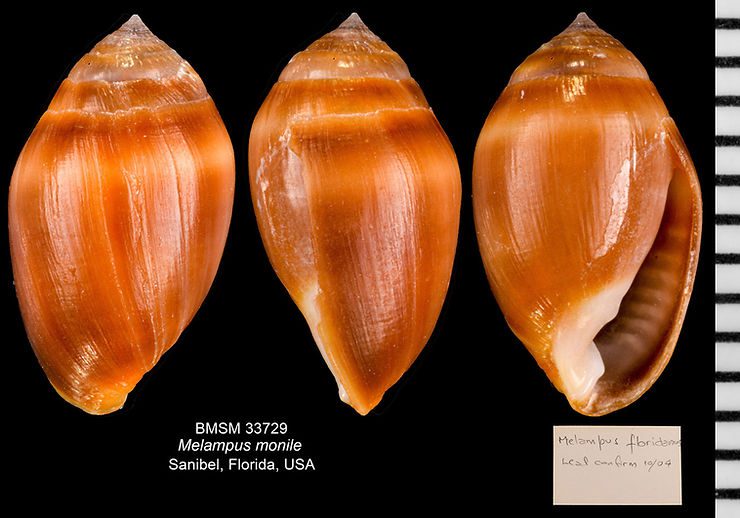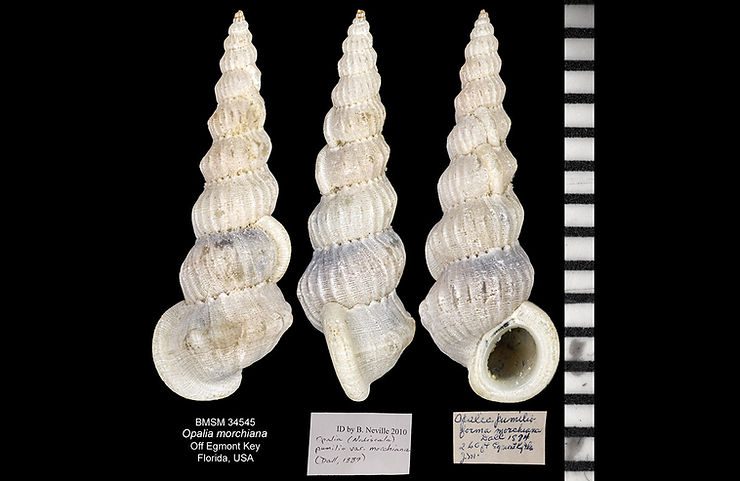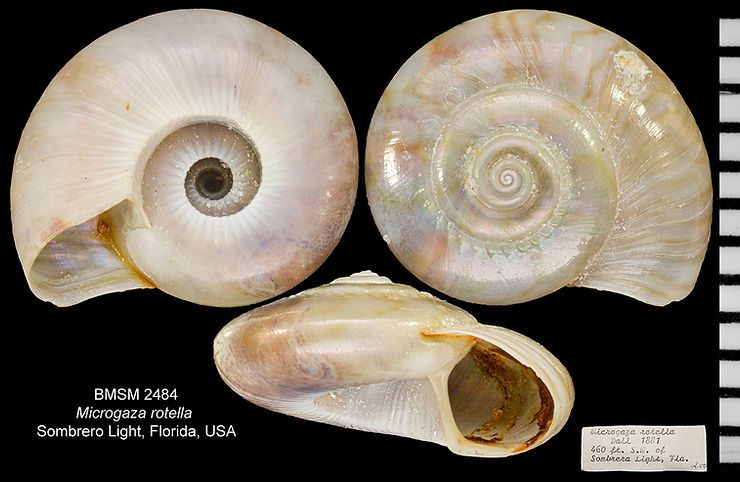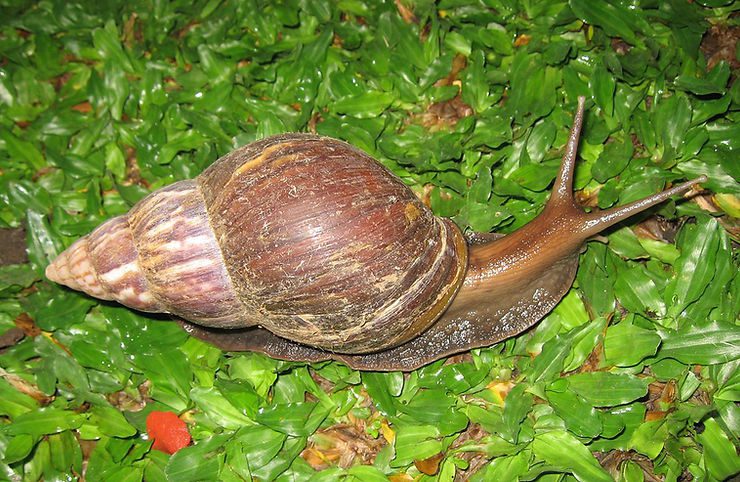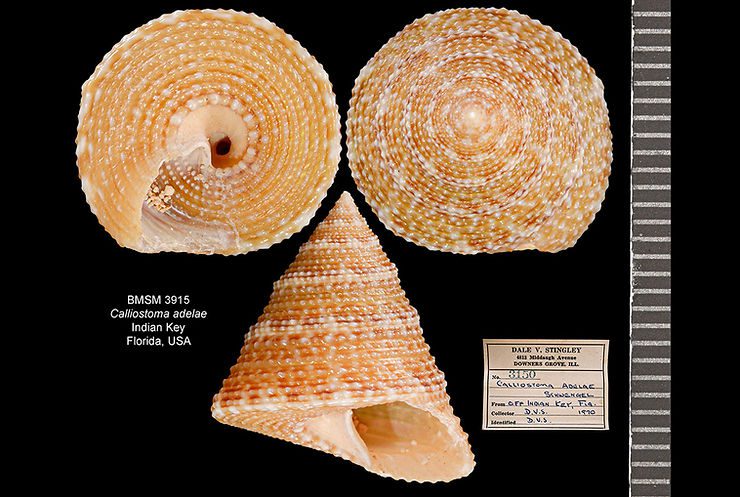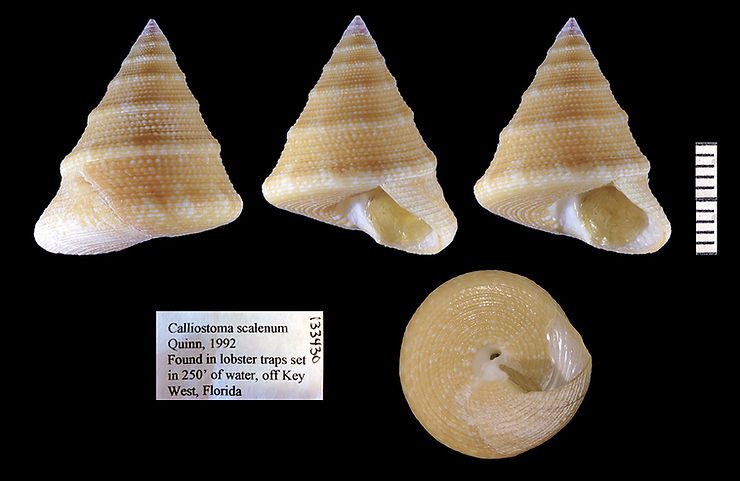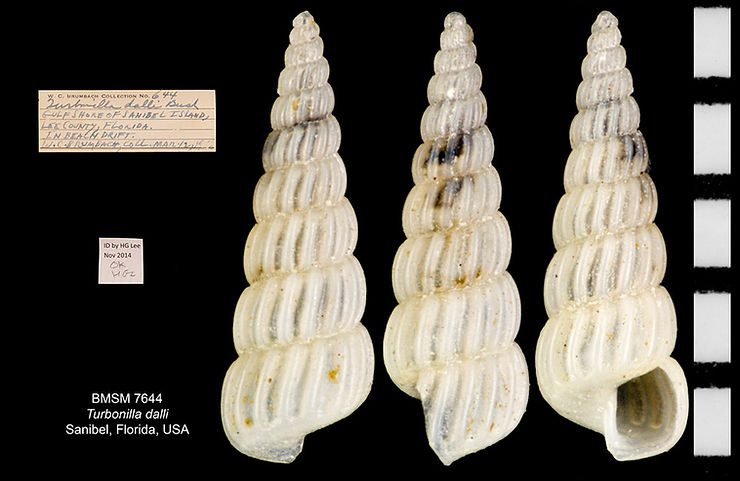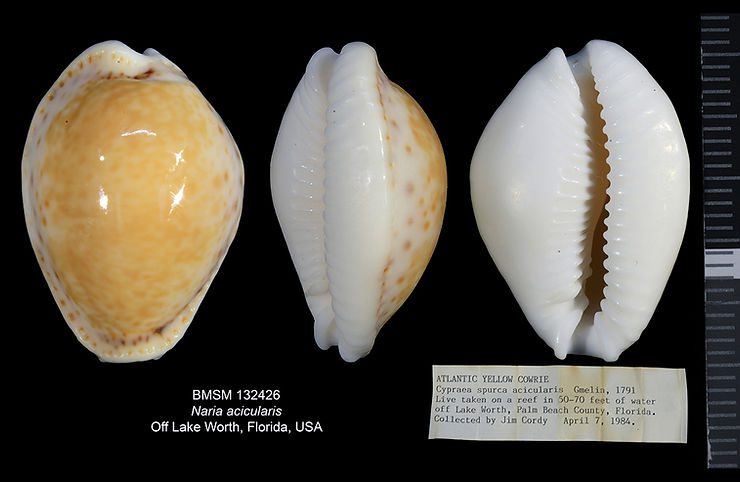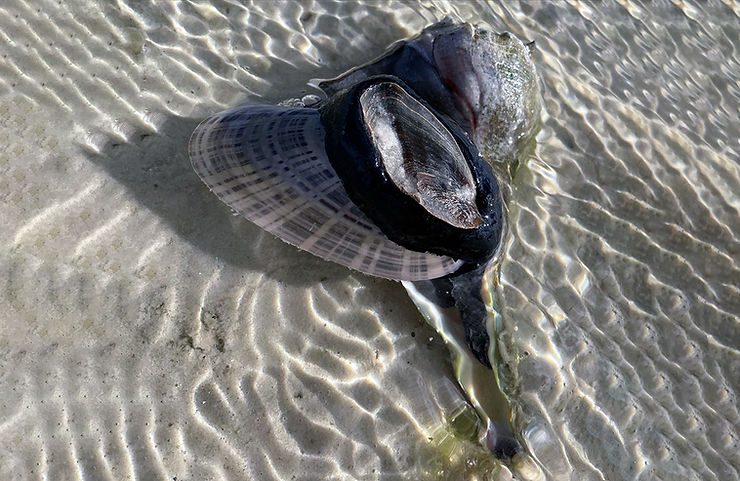
Meal Time!
During field work in Fort Myers a few weeks ago, National Shell Museum Marine Biologist Jorden Falker captured this remarkable image of a Lightning Whelk (Sinistrofulgur sinistrum) holding a Sunray Venus clam (Macrocallista nimbosa) in preparation for a meal. Lightning Whelks are known to use the edge of their aperture (the external lip) as a “clam knife” to pry open bivalves. To that end, they have to place the clam just so, which they do using their big foot to adjust the clam’s position. Ligh
